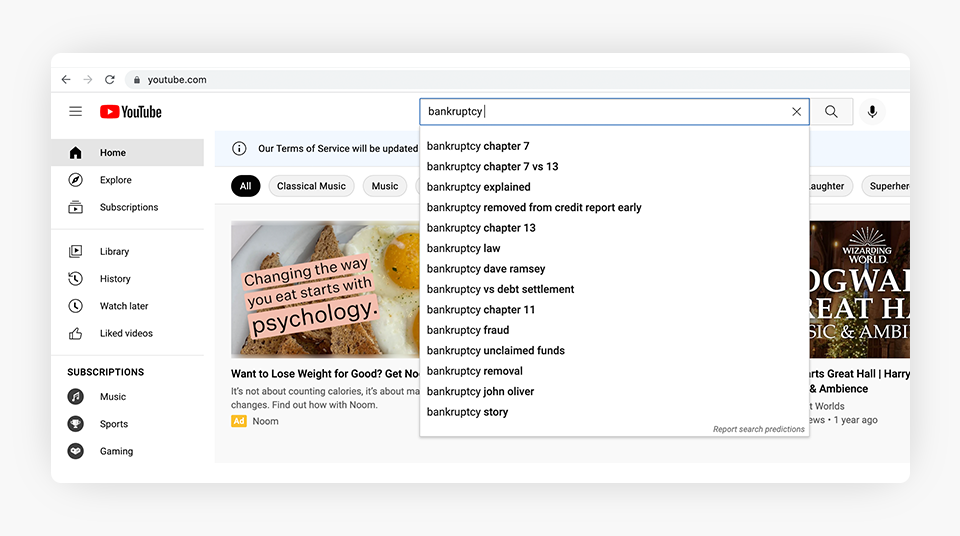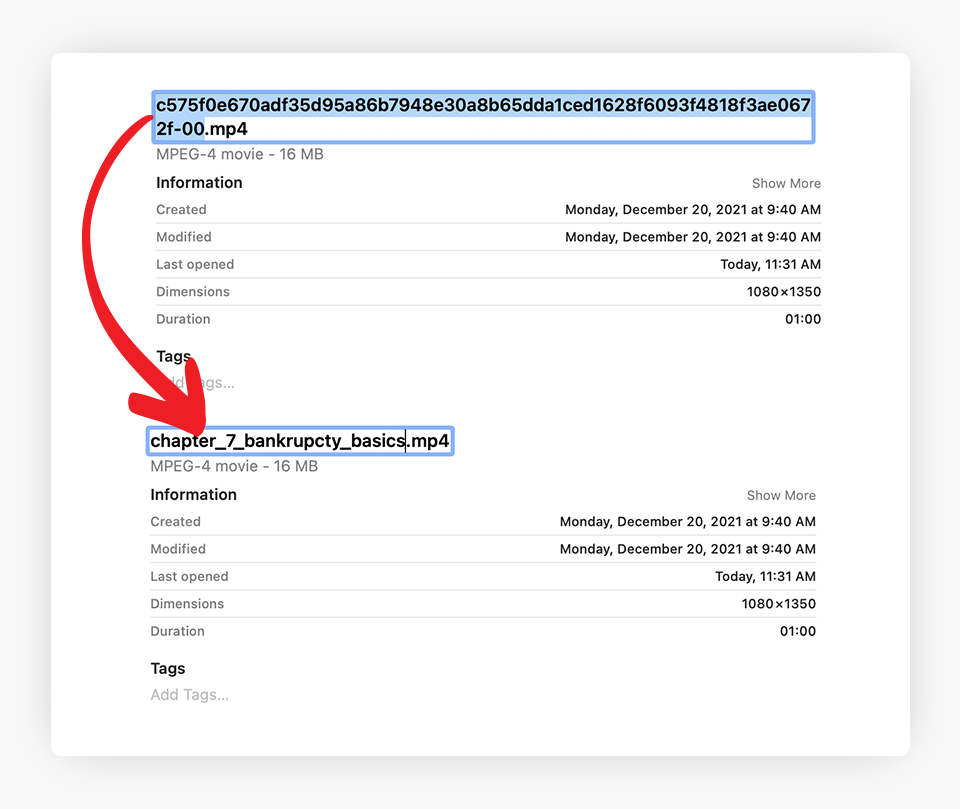We can’t send you updates from Justia Onward without your email.
Unsubscribe at any time.
As video marketing increases in popularity, it is important to optimize your content for better rankings and increased conversions. Check out this post for seven tips that can help you do both.
If you are a frequent reader of this blog, then you may already know that video marketing is becoming increasingly important for effective marketing campaigns. 96% of consumers have indicated that they increased their video consumption following the onset of the COVID-19 pandemic. In 2020, a Wyzowl survey found that 85% of businesses used video as a marketing tool (up from 61% in 2016), and 92% of marketers using video indicated it was an important part of their marketing strategy.
However, the legal community lags behind these national trends. In a recent Justia survey, less than 10% of respondents indicated their firm used non-YouTube videos as a marketing strategy in 2021, while just under 15% of participating firms reported leveraging YouTube videos as part of their marketing campaigns. However, YouTube videos were also the top new marketing strategy Justia survey participants anticipate testing for their firms in 2022.
Thus, the time is now for lawyers to stay ahead of the curve and start implementing video marketing as part of their larger legal marketing plans. To aid in this endeavor, we have created a list of seven tips to help beginners optimize their YouTube content for improved rankings and, over time, increased conversions.
Related Post: Lawyers: Understanding and Optimizing Your Law Firm’s Conversion Rate
Tip 1: Pay Attention to Keyword Research & Selection

It is no secret that keywords matter a lot in marketing. From your website’s SEO (search engine optimization) to blogging and PPC ads, keywords are an integral part of getting your messages and content in front of the right audiences. Thus, it should be no surprise that keyword research and selection are very important for optimizing your YouTube videos as well.
You can check out the various keyword research tools to help you get started on figuring out which relevant keywords will help your video perform best in YouTube searches. However, we also suggest utilizing a basic, but easily overlooked, resource as part of this research: the YouTube search bar.

The suggested autocomplete terms give you a great place to better understand how people are searching for similar content. For example, if your video is about bankruptcy law try searching for other videos on this topic on YouTube. This will help you understand the high-demand keywords people may be using when they seek this information.
While you can work to optimize for multiple keywords, remember you should not choose only overly generic keywords. Instead, you want to also make sure you are thinking about phrases that help narrow your target audience. These are the long-tail keywords of YouTube optimization.
For instance, the terms “Federal Court” or “Car Accident” may be very relevant to your content but also very broad. However, terms like “Louisiana Federal Courts” or “New Orleans Car Accidents” may help you better reach your desired audience with less competition from other videos.
Tip 2: Name Both Your Video File and Video Appropriately
From the moment you upload your video, the YouTube algorithm is working to categorize your content appropriately so it can be served to the right users. Therefore, you will want to rename your video file to be something that reflects the content of your video, rather than the generic string of letters and numbers your computer may have generated.

Likewise, you want to be sure your title accurately reflects the content of your video and includes relevant keywords. Ideally, you want your primary keywords to be at the beginning of your title. For example, if your video is about the ethics applicable to legal marketing in New York, you will want to start your title with keywords that reflect this topic. A possible title may be “Legal Marketing Ethics – NY Rules” or something similar.
Keep in mind that YouTube titles have historically been limited to a max of 100 characters, but most recommend keeping your title less than 70 characters due to how they are shortened in search results. Many vloggers also recommend keeping your titles to somewhere between 45 and 50 characters for best performance.
Tip 3: Remember That Tags and Categories Matter on YouTube
Tags are a critical part of ranking on YouTube. The YouTube algorithm utilizes tags to determine the subject of your video and index it accordingly. These tags also help YouTube associate your video with similar videos, which can expand your reach to new audiences. Your keywords can guide your tags and you should utilize a good mix of both commonly used, broad keywords and longer phrases. Be sure you are using tags that are relevant to your content and not just designed to grab more views.
The video below guides you through the process of adding tags to both new videos and previously uploaded videos.
After you have uploaded a video to YouTube, you should also take advantage of the option to categorize your video content. This is available in the advanced settings menu and can further expand your reach by aiding the platform in grouping your video with other similar content.
Tip 4: Take the Time to Write a Strong, Optimized Description

Your video description helps both people and the YouTube algorithm determine the subject of your content. Think about this description almost like you would a short blog post. You want it to be well-written and original. You also want to naturally incorporate keywords.
YouTube will allow you to write a very lengthy description of your video, and there is nothing wrong with using all the available space. However, do not feel pressured to use the whole thing. Viewers are unlikely to read beyond the first two or three lines of text that are displayed automatically or click the “show more” button.
Tip 5: Select a Compelling Thumbnail

Your YouTube video’s thumbnail will be displayed in search results. It draws viewers to your video, as well as signals what your video is about. Moreover, having a compelling, eye-catching thumbnail generally increases the click-through rate on your videos, which in turn can increase your YouTube ranking.
Therefore, you should not just use the thumbnail automatically selected upon upload. Instead, you should upload a custom thumbnail image.

You will want it to have contrasting colors that pop. Because people naturally are drawn to friendly faces, you should consider having a person in the image. Try to avoid using an image that appears overcrowded or has lots of illegible text.
Tip 6: Promote Audience Engagement

To successfully use video marketing as a strategy for growing your law firm, you will want to promote audience engagement and interaction with your content. This type of engagement helps boost your video’s ranking and expands your reach to new viewers.
How do you promote this engagement? First, you will want to be active and consistent on the platform. You do not need to upload new content every day but should strive to create a regular posting schedule.
You also want to incorporate a CTA (call to action) into your video at natural points. Many YouTube creators do this at the end of their videos by inviting viewers to like, comment, subscribe, and share on social media. However, you can also use a card at the beginning of your video for this purpose.
Also, consider adding an end card to your videos inviting users to follow your law firm on social media or contact your firm for additional information.
Tip 7: Active Distribution to Reach More Viewers

As you may have noticed, one of the most critical pieces of optimizing your YouTube videos for more conversions and better rankings is promoting engagement with your content. Thus, you should actively work on distributing your video content to reach a larger audience.
There are numerous ways to distribute your videos. You can embed them on your law firm website and within applicable law firm blog posts to expand your reach. You can also share them on your law firm’s social media channels, including Facebook, LinkedIn, and Twitter, to drive more engagement and leverage the community aspects of social sharing. Add video links to your regular email marketing campaigns where they may be relevant and encourage your staff and other lawyers to share your content.
Final Thoughts: Why Do You Care?
When you spend the time, effort, and resources to produce a video for your firm, you want to maximize the chances that you receive a positive return from your investment. Optimizing your video for better rankings and increased conversions helps push you closer to this goal.